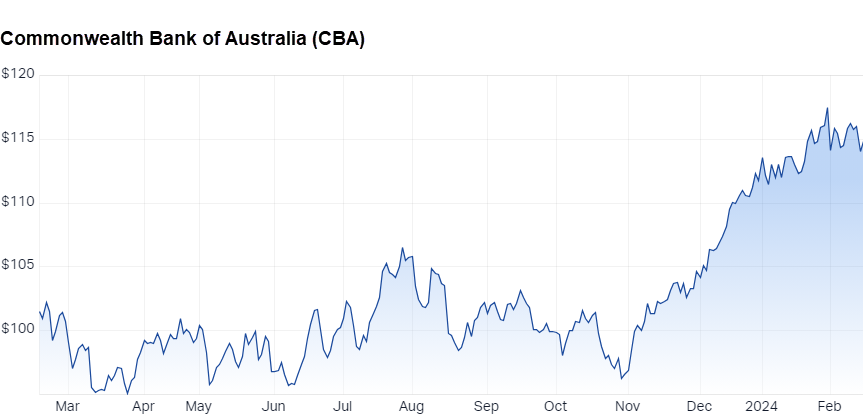Why do the big brokers hate Commonwealth Bank so much?
Commonwealth Bank of Australia (ASX: CBA) is widely considered among the investment community as arguably Australia’s highest-quality banking operation, but it’s also considered the most overvalued.
One could argue CBA attracts a quality premium, but it does beg the question: Why does the stock consistently trade above the major brokers’ price targets? The direct result of this is, for a very long time now, that CBA has consistently been rated at no better than a “hold” by the major brokers, and it’s usually rated at some version of “sell”.

Unfortunately, CBA’s latest results have done little to change brokers’ views. If anything, the recent sharp run-up in the bank’s share price of nearly 20% since October has triggered the reiteration of “overvalued” claims in most research reports covering the release of the result.
In this article, I’ll review these reports and try to make sense of why CBA remains Australia’s most hated bank among the big brokers!
Macquarie
Rating: “UNDERPERFORM” | Price Target: $88
Macquarie said CBA delivered a “solid and clean result”. However, the bank’s superior deposit base could turn out to be a “thorn in CBA's investment thesis”. This is because customers are likely to migrate from cheaper deposits to higher paying ones, and with rate cuts likely this year, it could put CBA in an increasing bind with respect to its margins.
Morgan Stanley
Rating: “UNDERWEIGHT” | Price Target: Cut to $93 from $94
Morgan Stanley said it doesn’t think “the operating trends or commentary matched the recent pick-up in investor optimism about the outlook for retail banking. Without material upgrades to forecasts for earnings, dividends and buybacks, we believe CBA's P/E of ~20x and P/BV of ~2.7x are not justified.”
Citi
Rating: “SELL” | Price Target: Cut to $82 from $84
Citi said “revenues were boosted by better-than-expected trading revenues” but that forward metrics are “deteriorating”. The “poor read for NIM” (net interest margins) would worsen due to “liability headwinds” with “few signs of near-term abatement”. Citi feels investors may question the premium they attach to CBA as “Falling core earnings and rising bad debts will likely continue to pressure the dividend payout ratio.”
UBS
Rating: Downgrade to “SELL” from “NEUTRAL” | Price Target: $105
UBS blames “ongoing cost inflation and increased IT-related spend” as the reasons for the broker’s cuts to earnings per share (EPS) and NIM forecasts for FY24-26. Combined with CBA’s recent strong share price performance, this triggered a rating downgrade.
JP Morgan
Rating: “UNDERWEIGHT” | Price Target: Increased to $89 from $88
JP Morgan feels the pervasive rally in the company’s share price means its valuation premium relative to its peers has become completely detached from its returns profile and growth outlook, making CBA arguably the most expensive bank in the world.
The rest
Barrenjoey: “UNDERWEIGHT” | Price Target: Raised to $90.00 from $85.00
CSLA: “UNDERPERFORM” | Price Target: Cut to $109.70 from $110.00
Goldman Sachs: “SELL” | Price Target: Cut to $81.98 from $82.37
Morgans: Downgraded to “REDUCE” from “HOLD” | Price Target: Increased to $91.28 from $90.18
Consensus
Considering these broker reactions, CBA’s average rating is now “UNDERPERFORM/SELL”, and the average price target is $91.73 – a 0.7% reduction from the brokers’ previous average target, and a whopping 20% discount to the stock’s trading price at the time of writing.
Whether the big brokers love it or hate it, so far, CBA has delivered investors a combination of share price gains and a solid (albeit the lowest of its Big 4 peers) dividend yield. It’s defied broker expectations for years, so why should anything change now?
*Consensus View rating is calculated by assigning a value of 1 to any rating better than neutral, 0 to a neutral rating, and -1 to any rating worse than neutral. The average of the numerical ratings is calculated and a value of 0.5 or greater is considered a consensus BUY/OUTPERFORM/OVERWEIGHT rating, a value of less than -0.5 is considered a consensus SELL/UNDERPERFORM/UNDER-WEIGHT rating, and a value in between is considered a consensus NEUTRAL/HOLD/EQUAL-WEIGHT rating.
This article first appeared on Market Index on 15 February 2024.
5 topics
1 stock mentioned

